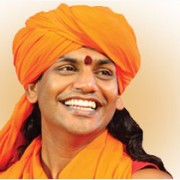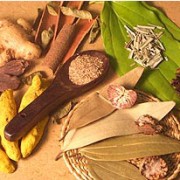The five paths of Yoga
There are many different paths or systems of yoga, for example, mantra yoga, kundalini yoga, swara yoga, bhakti yoga, japa yoga, hatha yoga, etc. Each one leads to the same source, the same experience, just like the different roads that lead into a city or the different rivers that flow into the sea. All the paths of yoga aim at the elimination of the ego and lead to meditation. They can be broadly classified into five fundamental groups:-
- Karma yoga – path of action or activity
- Bhakti yoga – path of devotion
- Jnana yoga – path of enquiry
- Raja yoga – path of introspection
- Hatha yoga – path of balancing the physical, mental and pranic layer in the body
It is good to practice a combination of all the five paths, with an emphasis and zeal on the path that best suits the personality type, the being. These paths are all intimately connected and not separated in a rigid manner.
Karma Yoga
Karma Yoga, the yoga of action, is the path or system of yoga for developing awareness through activity. It is the performance of actions done with intense awareness, non detachment from the action and non-attachment to the fruits of actions. It is not what you do, but the attitude and state of awareness in doing it. This intense, honesty based action leads to reduction of the power of the ego and to more effective and efficient action and performance. “Yoga is efficiency in action” – Bhagavad Gita. Every action should be lived and pursued with the greatest intensity.
It is important to develop the ability to do the work, and at the same time be a witness to the actions. When one is no longer the doer, but merely the instrument, then every action becomes spiritual and the work becomes super efficient. Work becomes meditation as the doer, the actions, the object become one – this is the real karma yoga.
Bhakti Yoga
This yoga path of devotion appeals to those have some form of belief or devotion. The bhakta channels his emotions towards devotion of the deity, guru, or other object. He is motivated by the power of love. Through prayer, ritual of worship, mantra chant, songs of devotion, thebhakta loses his ego as he becomes totally absorbed with the object. In the Bhagavad Gita, Krishna says – “a bhakta can worship me in any form; whatever form he chooses, i will justify and accept his devotion”.
Bhakti can be cultivated and there are many practices that will help one develop bhakti. But if you are not emotionally inclined, do not force yourself to follow this path.
When there is devotion towards an object, all the energy flows towards it, leading to one-pointedness of mind which comes from intense love and devotion. Intense bhakti will induce the joy of meditation.
Jnana Yoga
This is the path of enquiry, where one enquires into the absolute truth of who we are, and what we are experiencing. It focusses understanding the laws of existence. The jnani uses the powers of the mind to discriminate between the real and the unreal, the permanent and the transitory. One has to transcend logic and rational thinking to receive the answers in the form of revelations. The full realization of this truth brings enlightenment.
Raja Yoga
Raja Yoga, also known as the royal road. Patanjali’sashtangar yoga is also known as raja yoga. He divided the system of raja yoga into the eight limbs of yoga or ashtanga yoga. Yama, niyama, asana, pranayama, pratyhara, dharana, dhyana and samadhi. It is the system where the physical and mental energies are turned into spiritual energies. It is the path of introspection where one becomes aware of and delves deep into the different realms of the mind – the conscious, subconscious, unconscious and superconscious with the purpose of becoming aware of the different aspects of the being. The chief practice is meditation.
Hatha Yoga
Hatha yoga is also known as the science of purification of body and mind. Swatmarama in his book Hatha Yoga Pradipika begins by saying, you should first purify the body. Then comes asana, pranayama and the practice of mudra and bandha. Self control and discipline starts with the body. Start with the body first instead of fighting with the mind first. In this way, it will be possible to develop deep meditation leading to samadhi.
Hatha yoga balances body secretions, hormones, breath, brain waves, prana so that the mind becomes automatically harmonious and ready for meditation. When the body and mind are cleared of impurities, the energy blocks in the nadis will be released, allowing pranic energy to flow to the brain. When kundalini energy ascends and reaches the sahasrara chakra or crown center, it is no more hatha yoga but yoga, which is the union of consciousness (shiva), with energy (shakti). Hatha yoga prepares one for the highest experience of raja yoga (samadhi). The ultimate goal of Hatha yoga is to bring about yoga.
In fact, hatha yoga is regarded as the first part of Raja Yoga. Intellect stands in the way of spiritual awakening; the practice of hatha yoga is most effective way of transcending the intellect because it works on prana and bypasses the mind in this way. Dormant areas of the brain are activated and one’s physical and mental potential begins to increase and manifest.
Though the ultimate goal of hatha yoga practice is preparation of the body and mind for the higher conscious states, it also plays a very important role promoting mental and physical health, and has been used succesfully by yogis and rishis for eliminating diseases. Illness in the body and mind is a state of disharmony in the energy systems. Hatha yoga has proved to be successful as a therapy in reversing cases of chronic ailments like high blood pressure, asthma, diabetes, rheumatism, hysteria, back pain. The practices in Hatha Yoga which consist of theshatkarmas (cleansing), asanas, pranayama, mudras and bandhas balance the energies in the body, healing the body and mind.
Several reliable yogic literature texts provide us the foundation for the practice and philospophy of hatha yoga. The well known texts are Hatha Yoga Pradipika by Yogi Swatmarama, GorakshaSamhita by Yogi Gorakhnath, GherandSamhita by Gherand and Hatharatnavali by SrinivasabhattaMahayogindra. All these texts are said to have been written between the 6th and 15th century AD. There are also some references to hatha yoga in the Upanishads and the Puranas as well as the SrimadBhagavatam.
Swatmarama is remembered for his treatise Hatha Yoga Pradipika, a direct, practical and technical handbook of hatha yoga. In this book he reminds all that all hatha yoga practices serve only for the attainment of raja yoga. The great sage Gorakhnath told his disciples that hatha yoga is the science of the subtle body, the means through which the body’s energy can be balanced; it is also the way the dual nature of the mind can be balanced.


